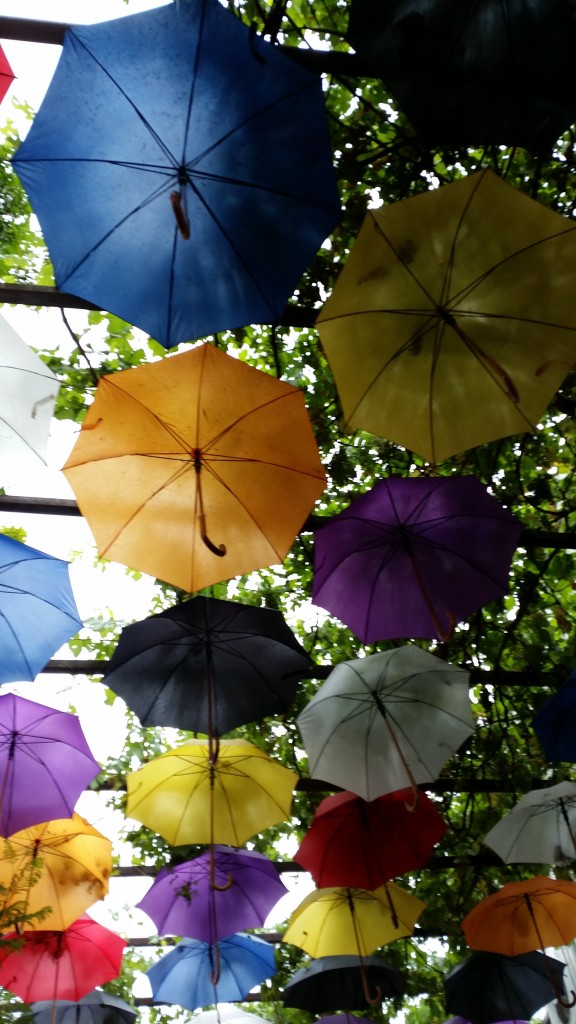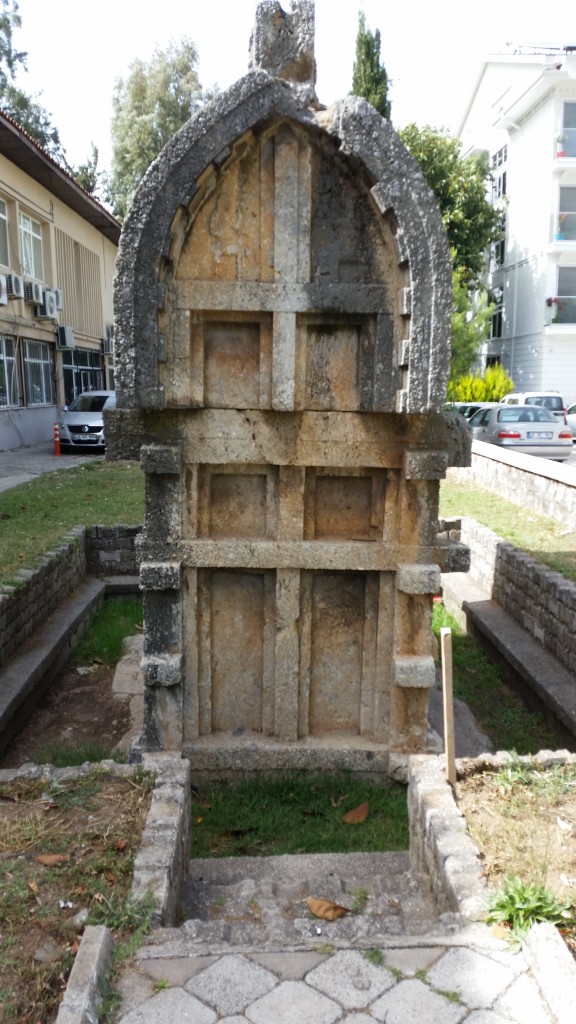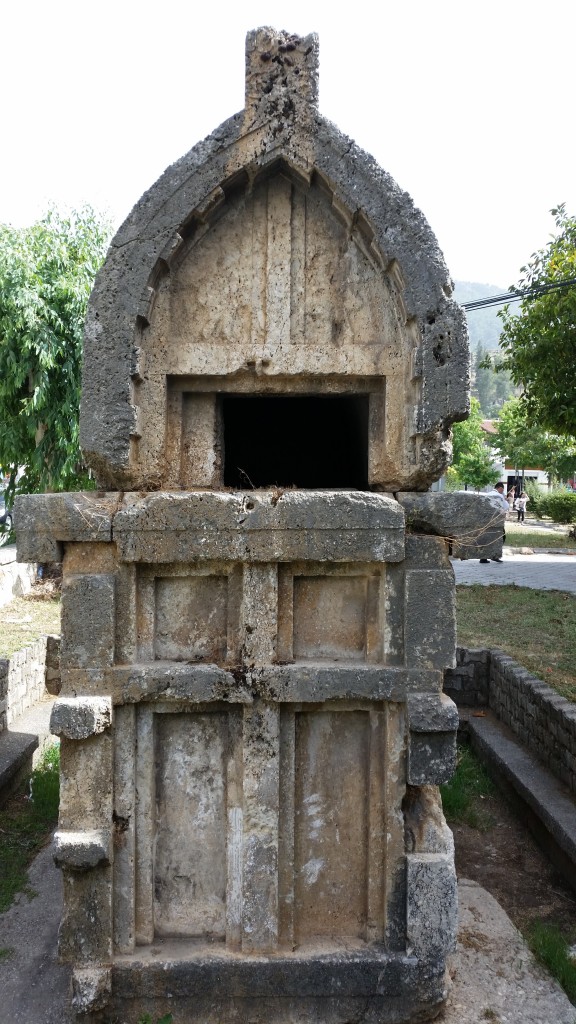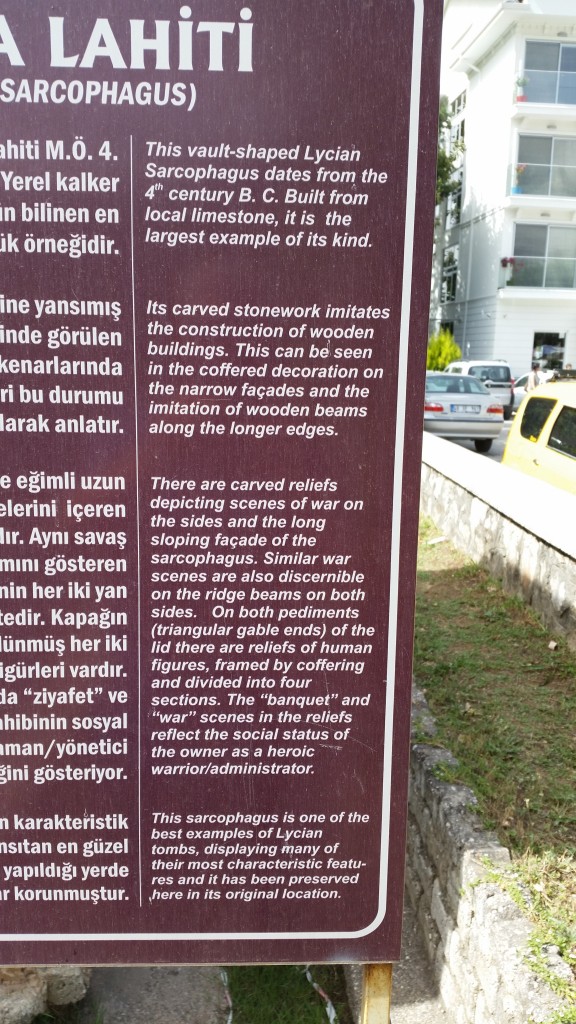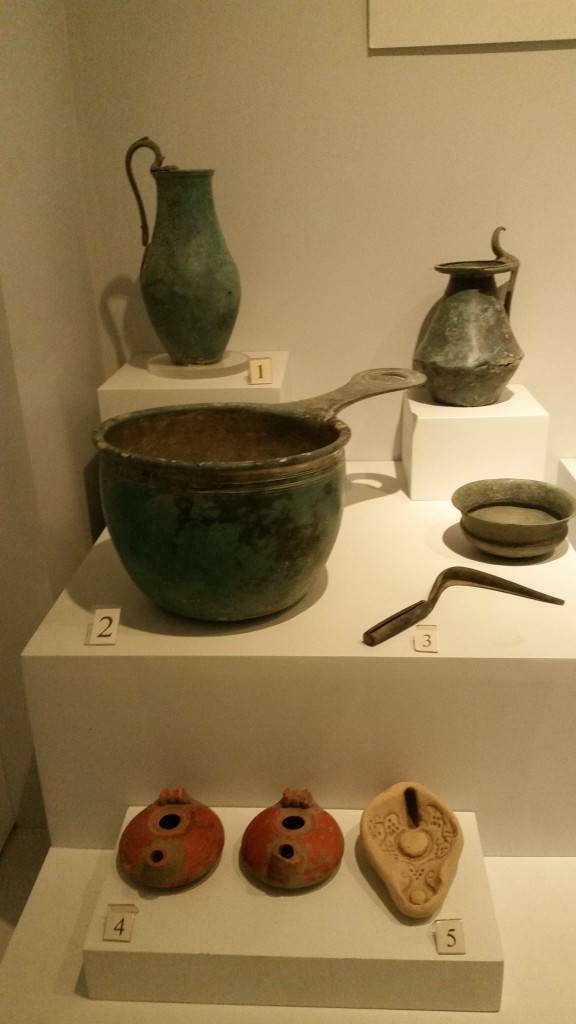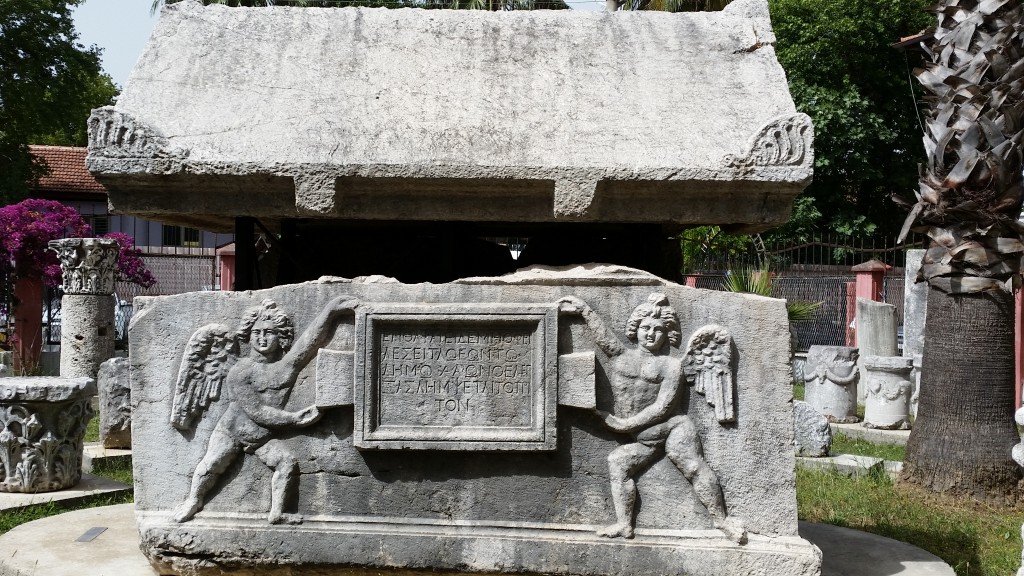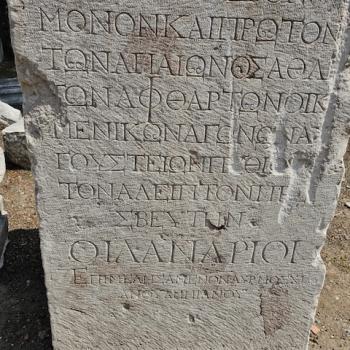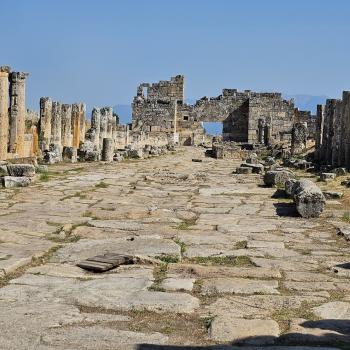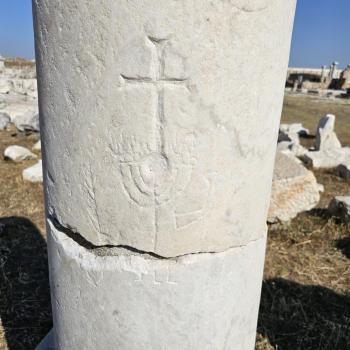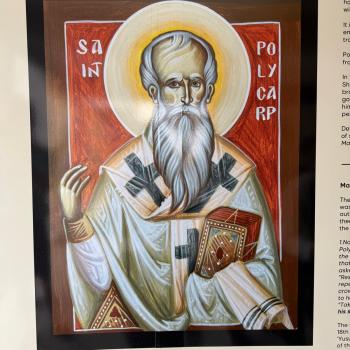Fethiye has a lovely little museum of its own, and if you walk there you see yet more Lykian sarcophagi….. like this one just sitting in a public school yard….
Aslan welcomes you into this fine one floor museum.
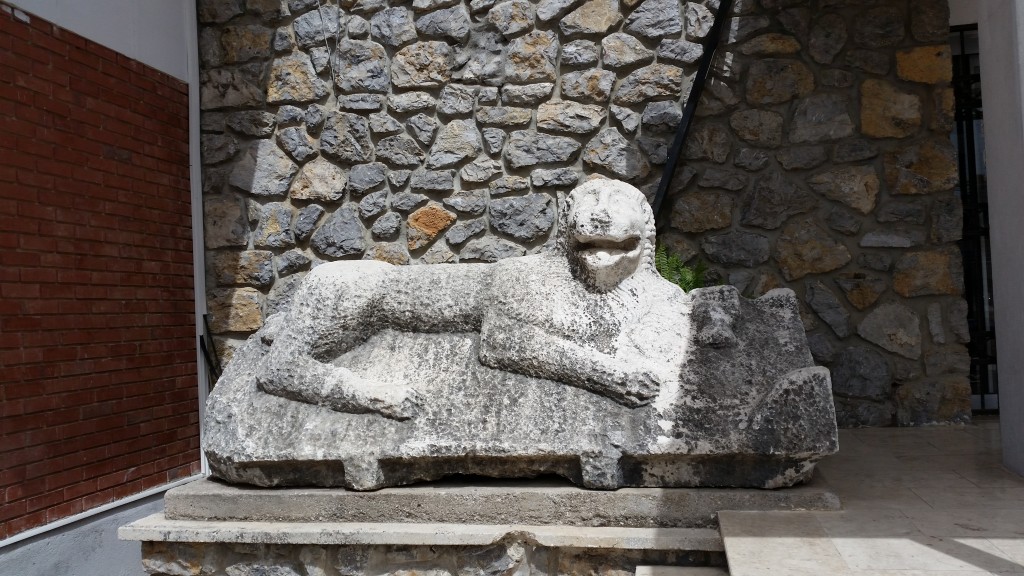
Once inside the air conditioned museum (unlike the big one in Istanbul— hint, hint),
there is a useful map which shows us not only where Fethiye is but where the Lykian kingdom was….
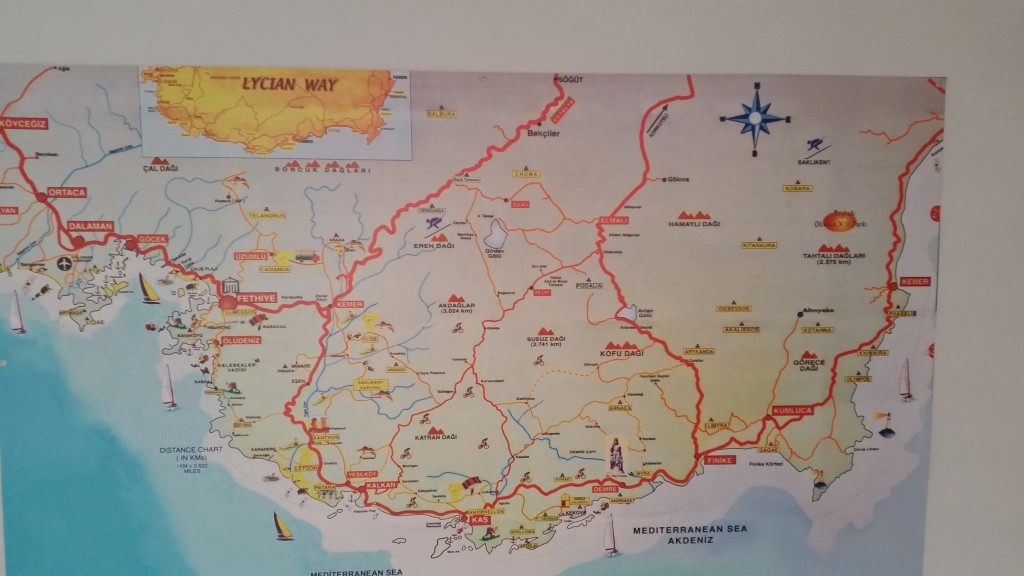
And while you’re pondering that, here is a nice little bit of museum moralizing pasted to the wall over the exhibits….
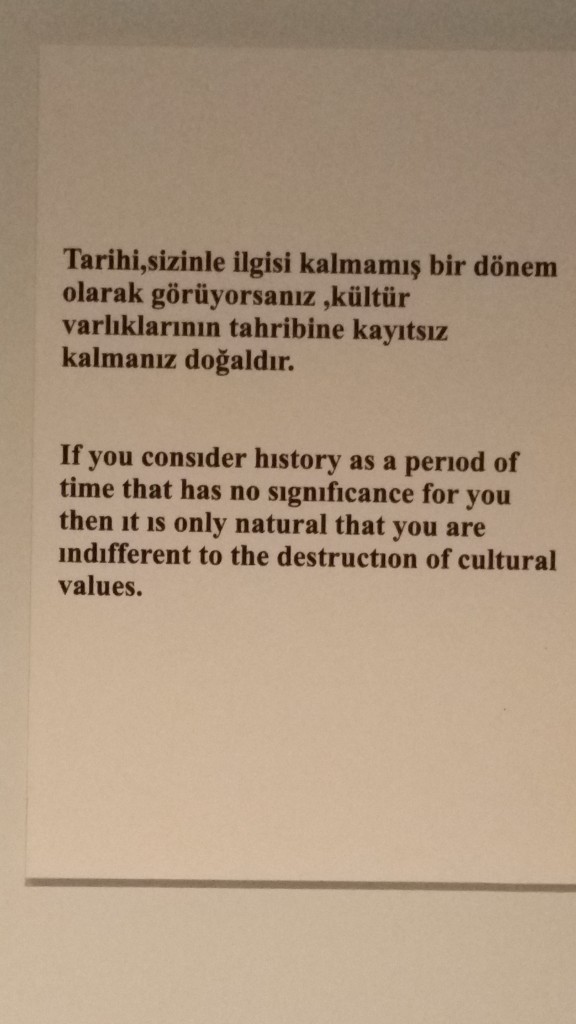
Actually, I agree with this.
Our first big artifact is the most famous item in the museum— the Trilingual inscription from Leto/Letoon.
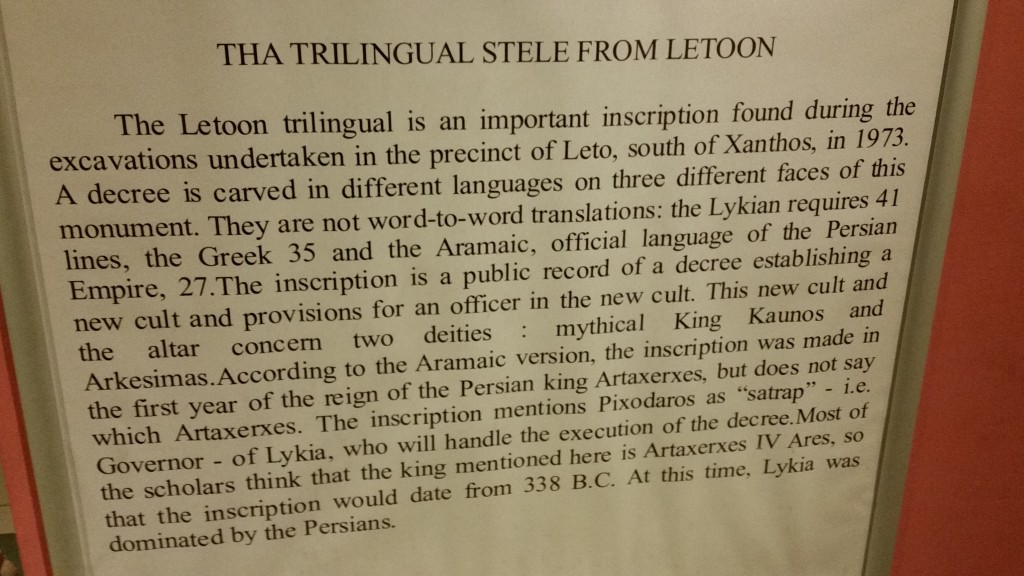
Some will be surprised to discover the Persians were all the way into western Turkey, in the 4th century B.C. But yes they were here. And you may even remember the name Artaxerxes if you have studied the OT and the ANE. In any case this inscription helps us decode the Lykian language, since we can compare it to Greek and to Aramaic, both languages we already knew.
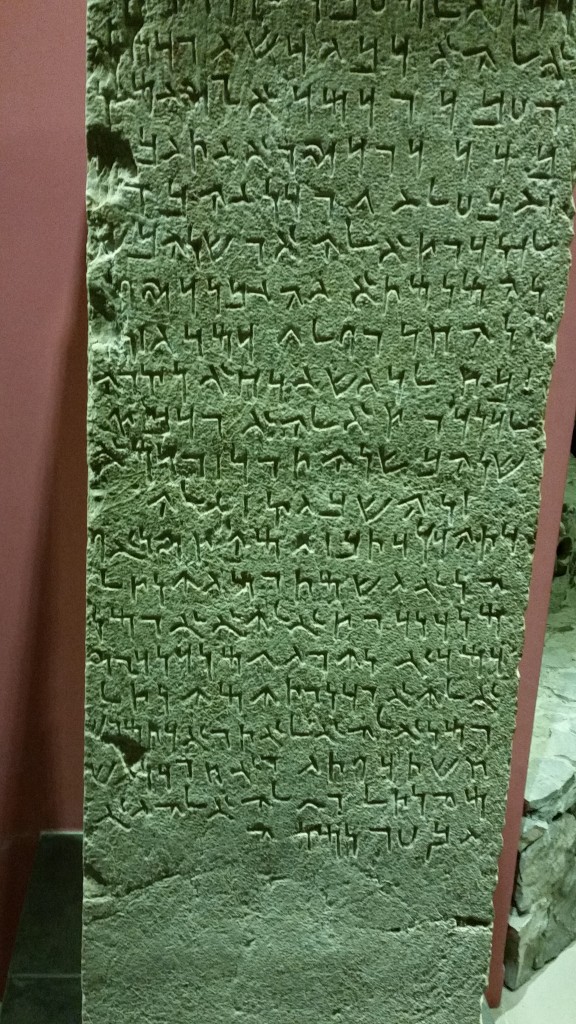
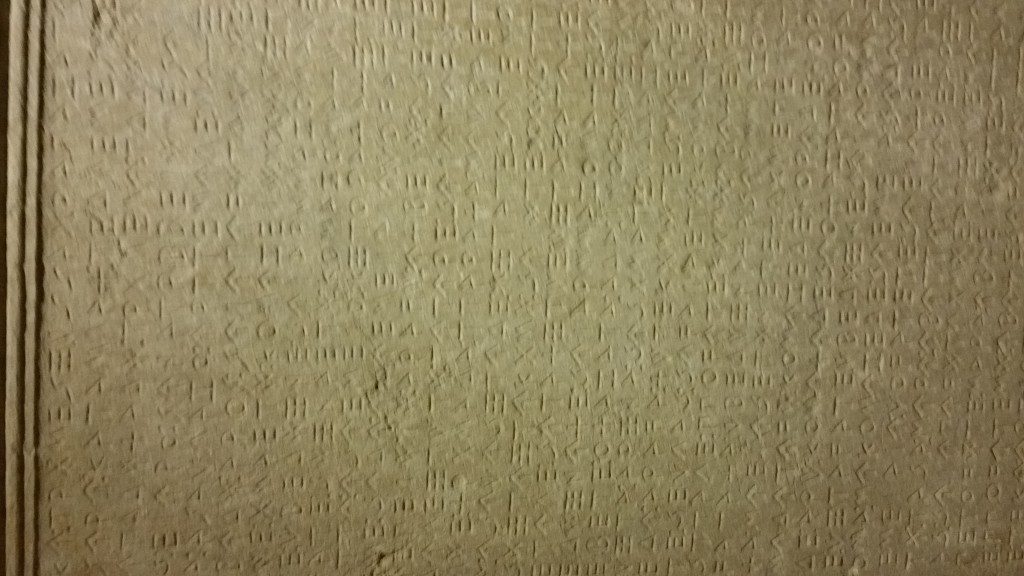
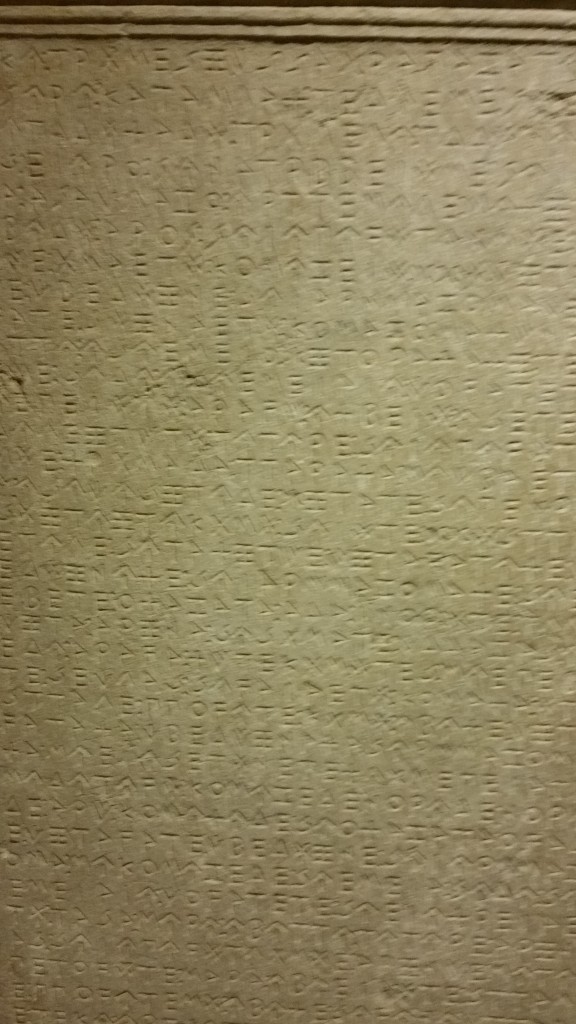
This last picture shows the Lykian language. There is also a famous bi-lingual tablet in Carian and Greek in this museum, but sadly it is laying flat behind a wall of glass, and is impossible to take a good picture of.
Here is one of my favorite items, a child with a bird from the second century A.D. This item was stolen, and then confiscated and turned over to the museum.
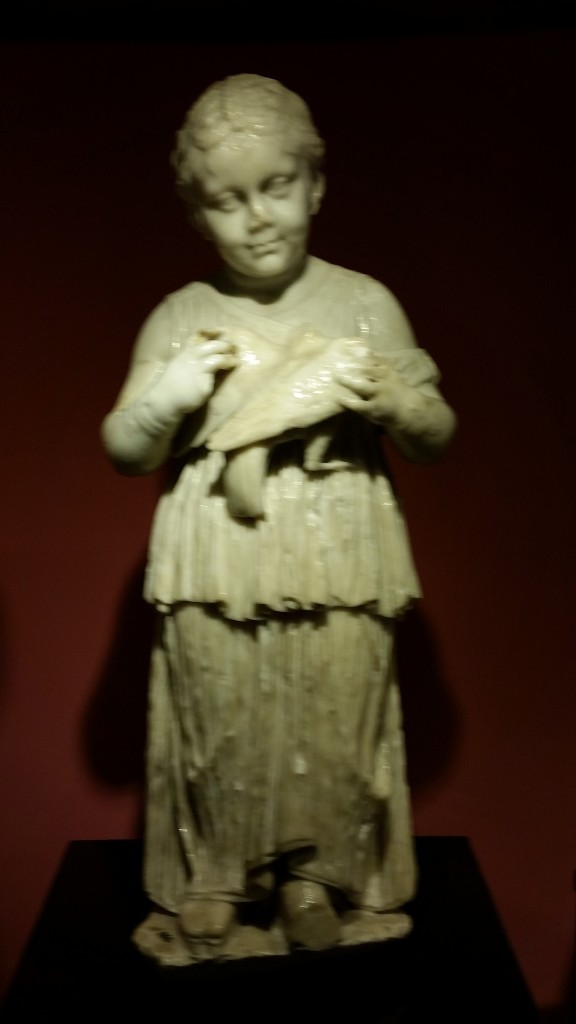
And here’s an Emperor (notice his sandals). I’ll let you guess which one(clue, not one from the first century).
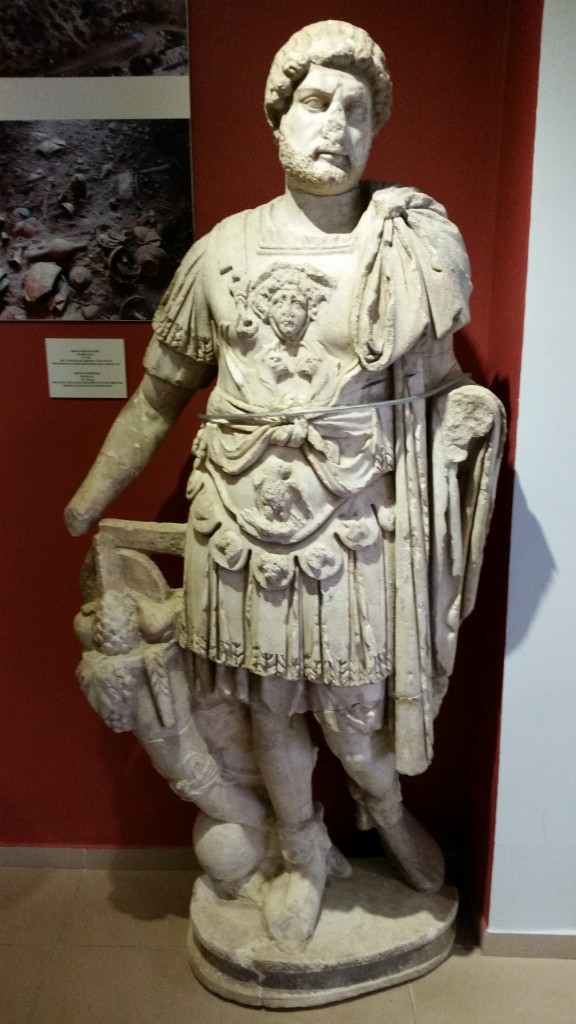
If you’re Emperor, you can wear whatever you like on your feet….It’s good to be the king.
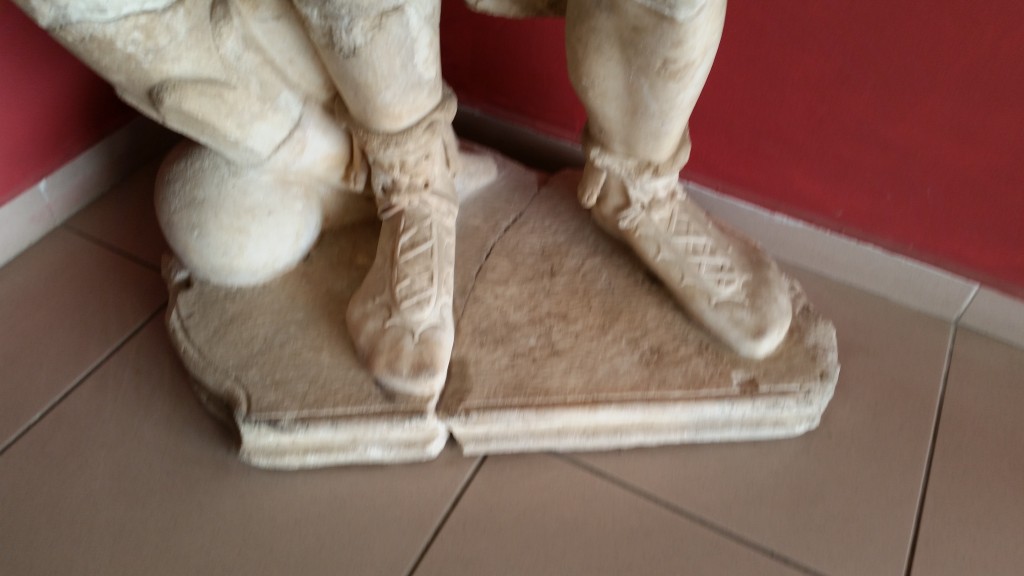
As we have already learned, there are many different incarnations of Artemis, and this little statue, as far as I’m concerned wins the prize for the most funky Artemis statue.
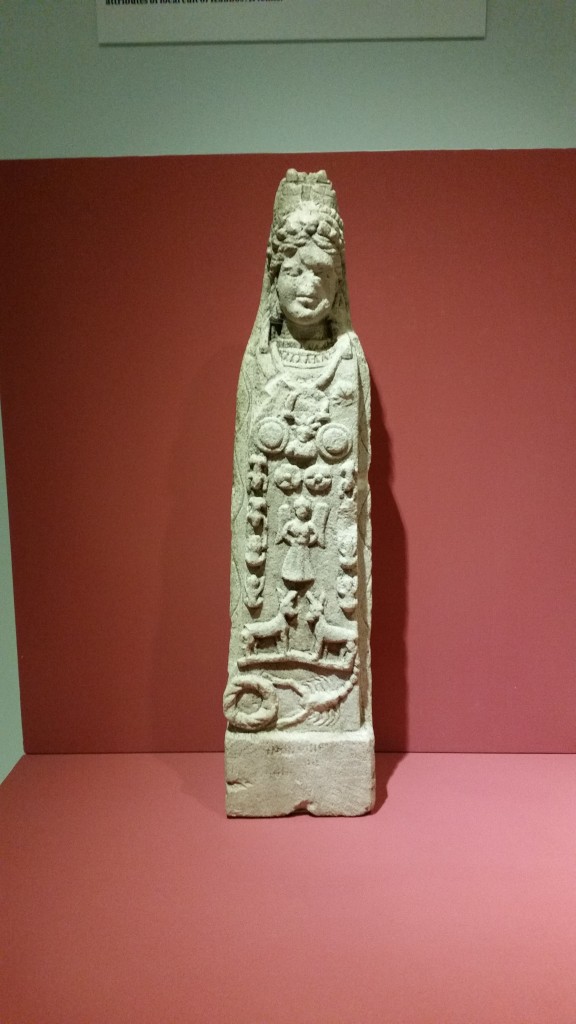
O.K. so at the bottom you have a scorpion holding a wreath, sideways. Then above that you have two donkeys. Then above that you have angels little and big. Then above that you have rosettes as a breastplate, then above that you have a necklace adorned with something that looks like a horseshoe. Then you have her head, and headress, including a kiste box on top, which one wore in processions and parades. All I can say is— do not mess with this woman if she has all those critters on her side.
The stelae of promise is interesting…
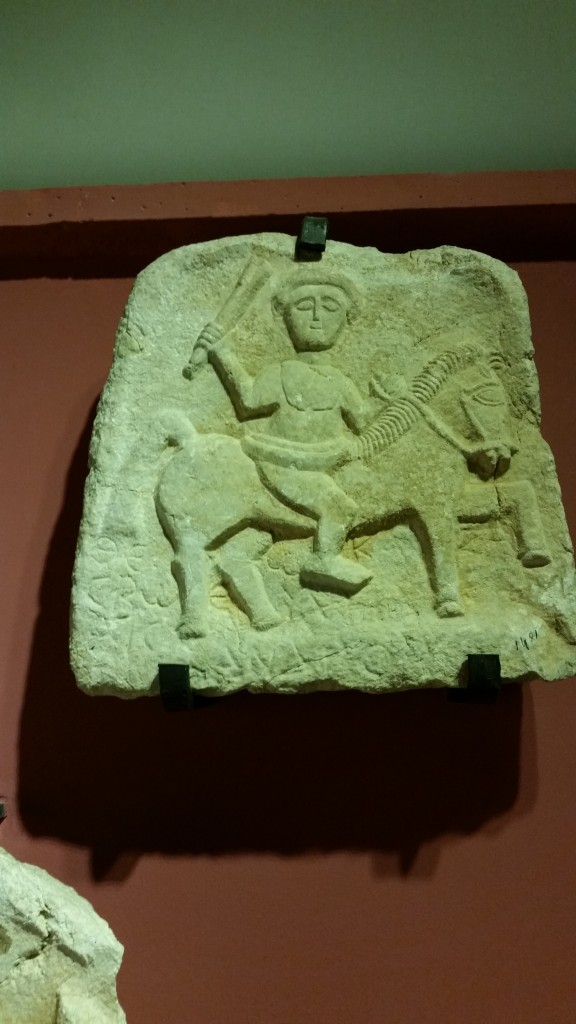
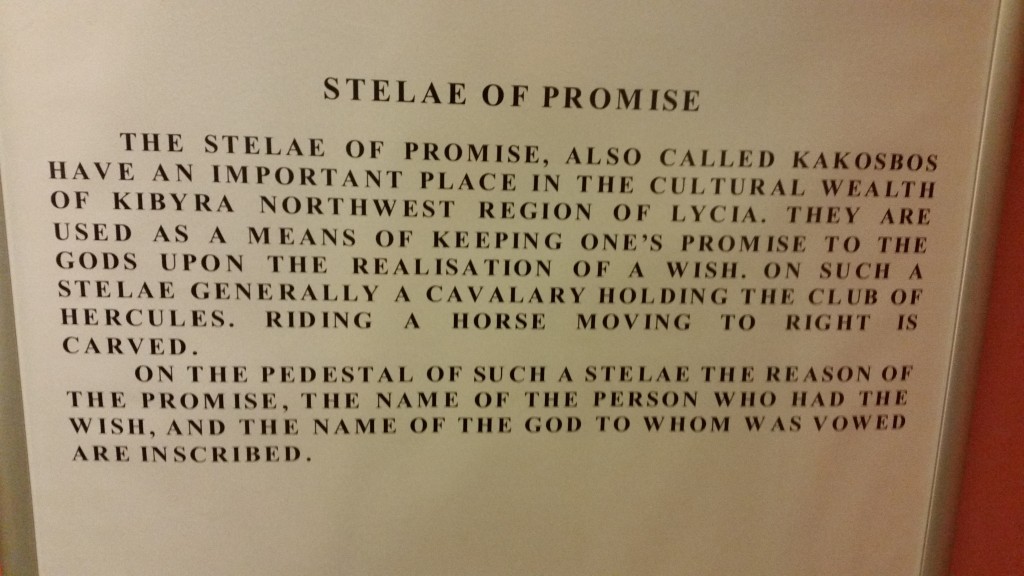
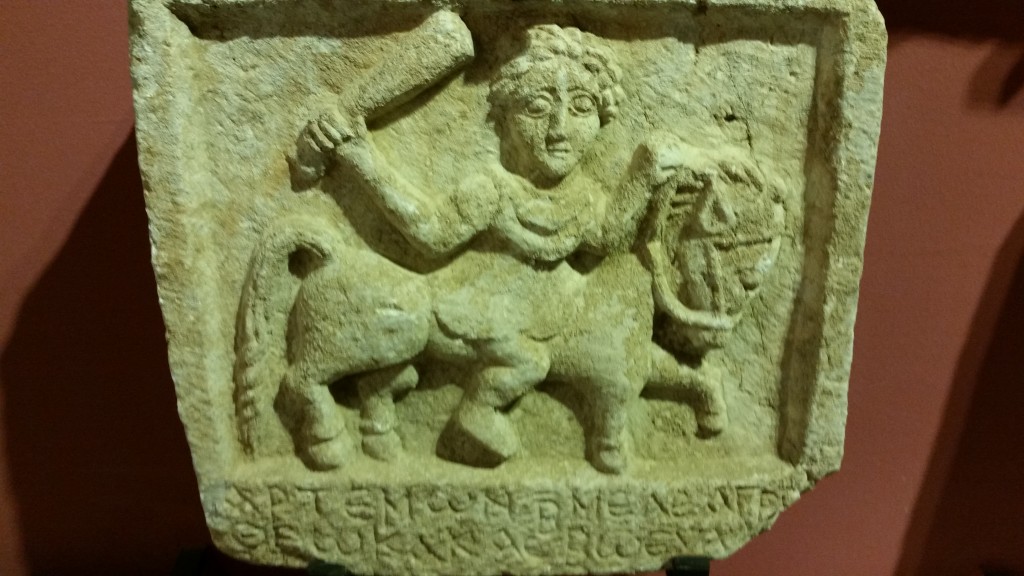
Or how about a golden bowl or a golden crown?
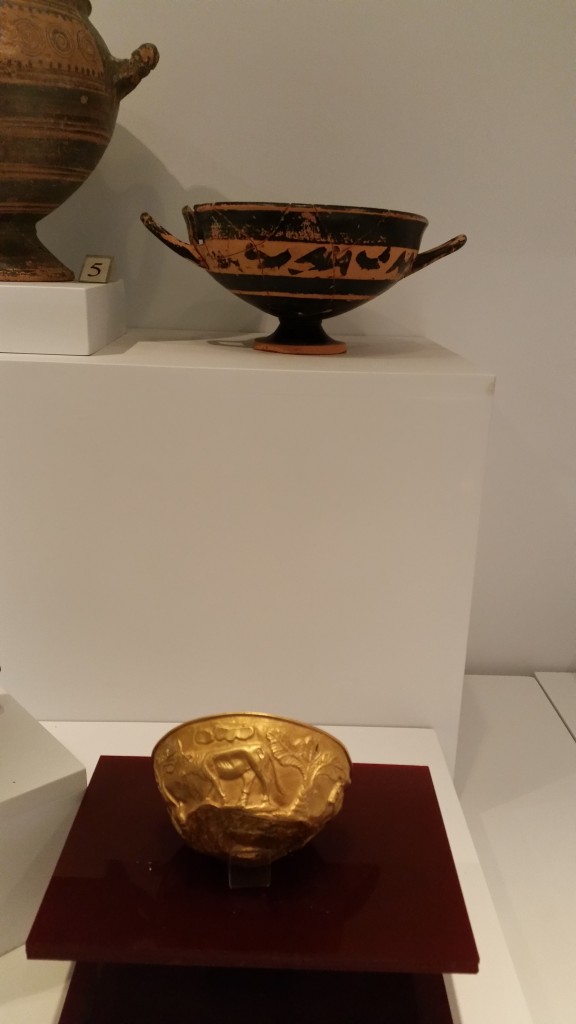
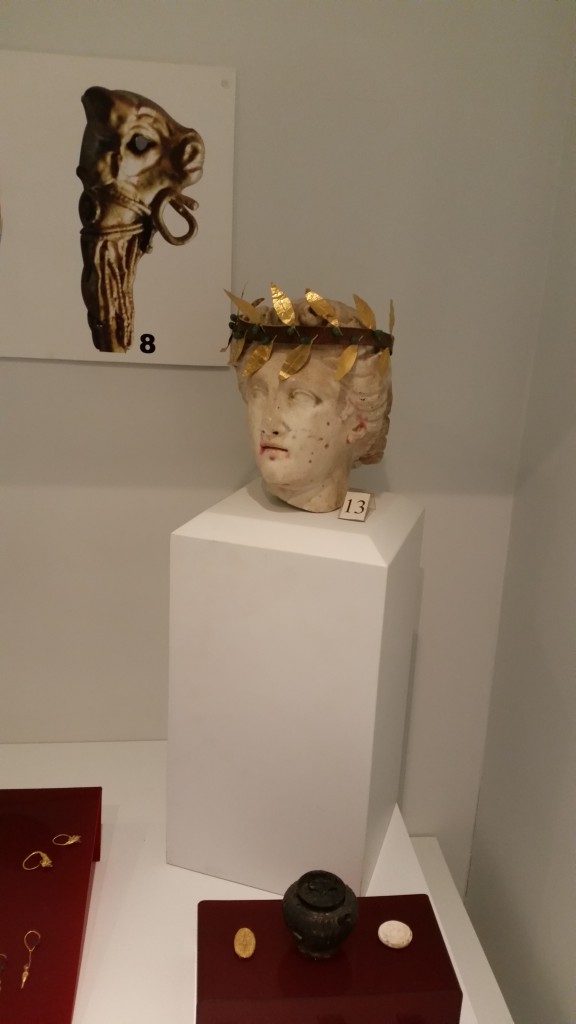
Here is an interesting grave stelae, presumably for the woman depicted, who apparently had a small child. Many women did indeed die in childbirth in antiquity. In any case the inscription seems to be invoking several gods to help Dionysius (twice), Artemis (once) and perhaps other local deities as well.
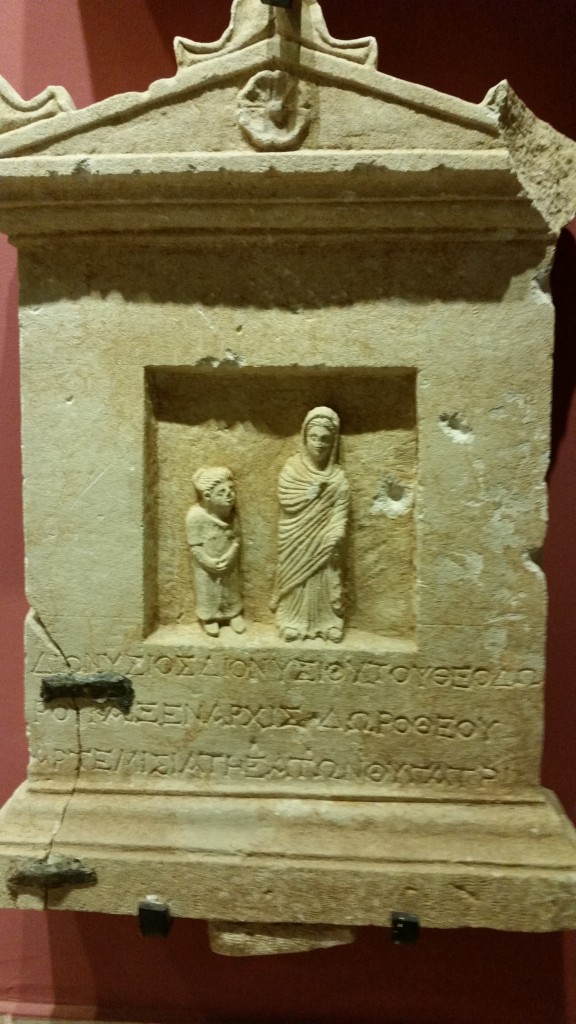
Here is an interesting stelae which I call the three guys— Apollo Nidos, Artemidoros, and Jason….. It is surely not a grave stelae…. but boy those guys look alike!
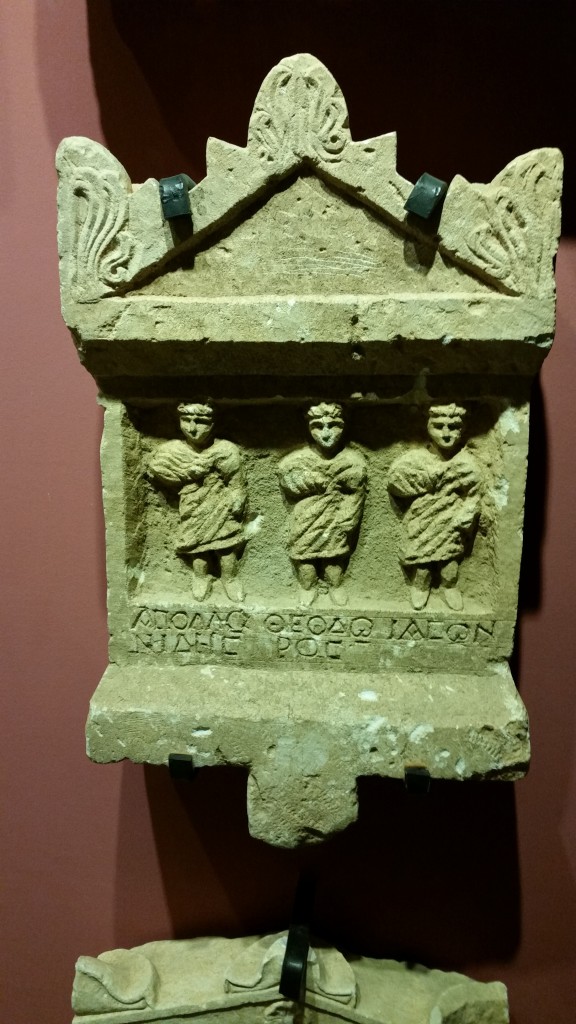
Votive altars could come in any size, not least because most people offering little wine libations and the like. Here are two, the first with the name Artemidos, the second is truly tiny.
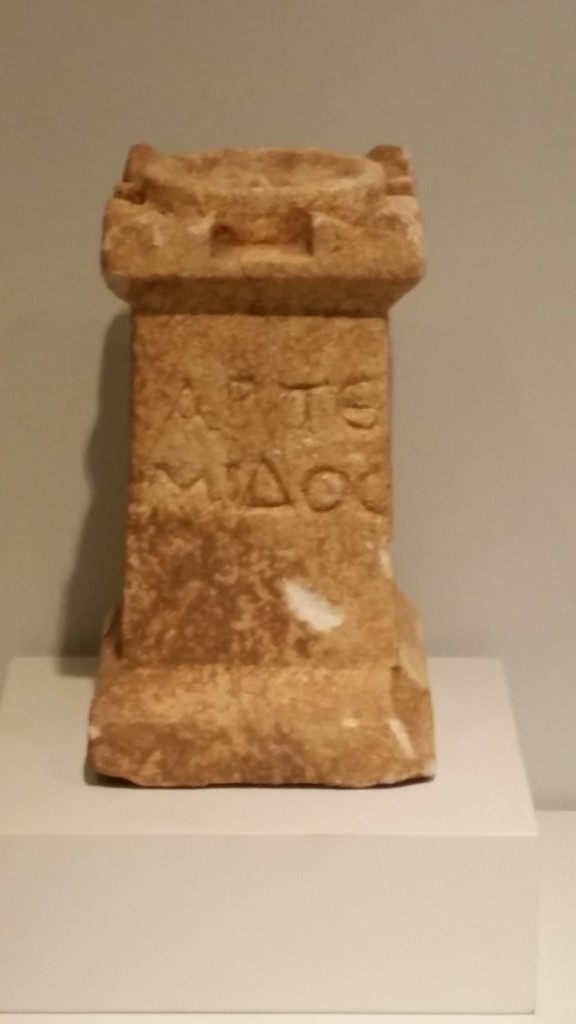
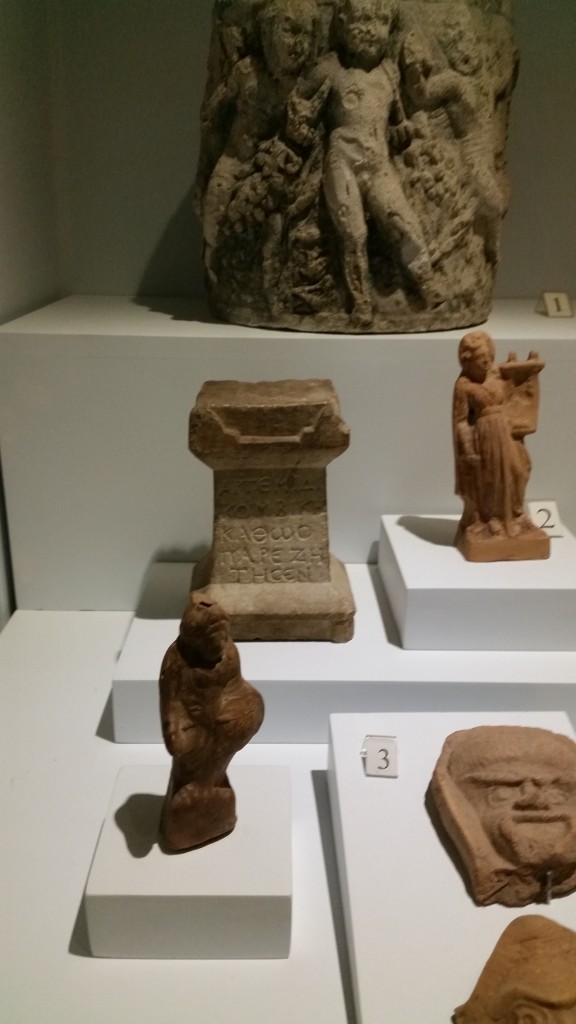
Here is a nice bronze head…. Corinth was famous for its bronze statues.
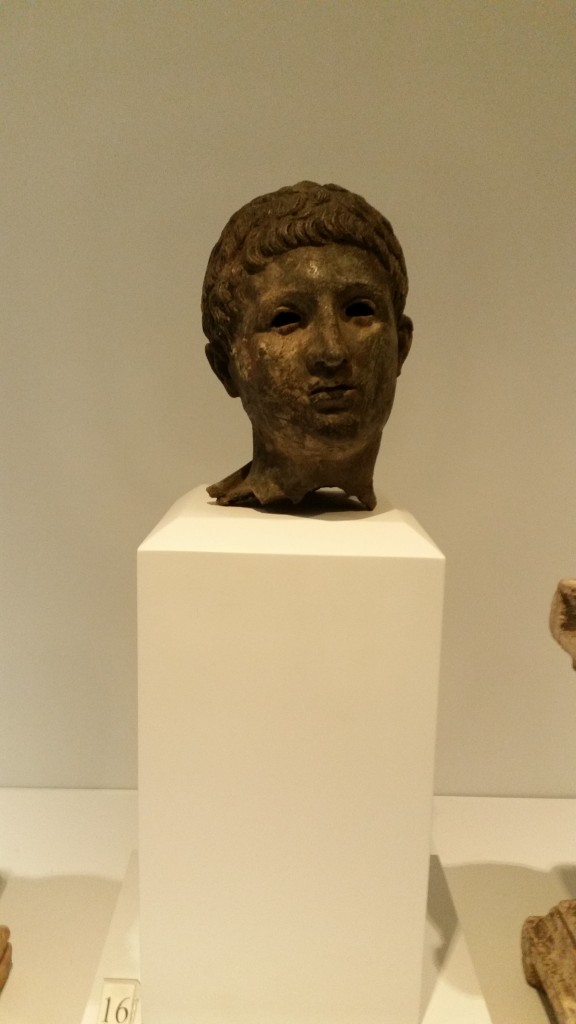
This museum has a lovely collection of ancient glassware for various purposes, and kitchenware made out of metal, as well as lamps.
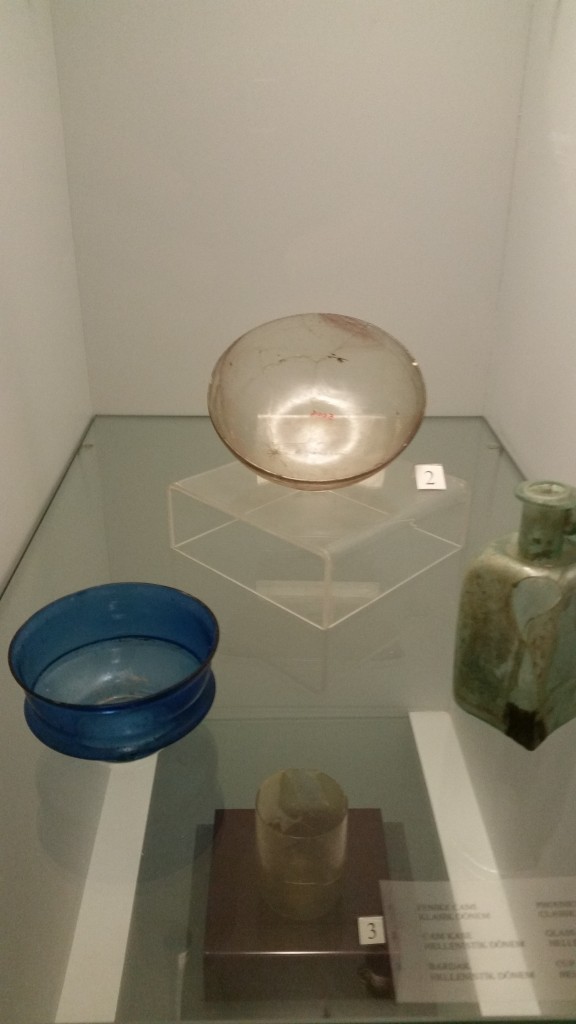
Here’s an interesting clay canteen…
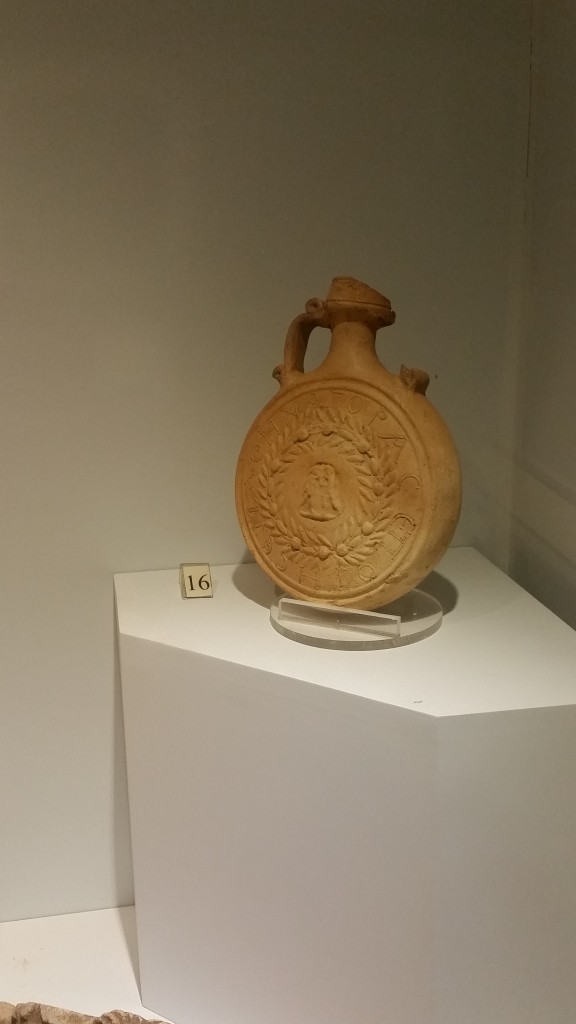
There are some interesting things outside in the courtyard on the left side of the building… For example, there is this later honorific drum, and you can tell it is later Byzantine Greek because for one thing, there is even separation of words on it…
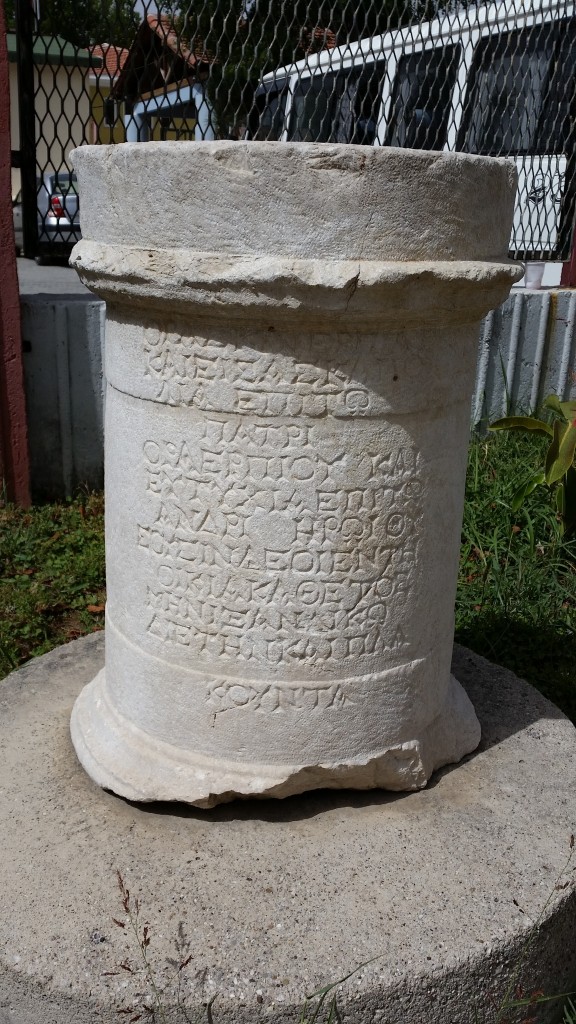
There is also a gigantic sarcophagus which you could fit Gus, and his whole family and his parents into at the same time.
As we whizzed back through town to the boat, I noticed these very different sort of water containers in the cafes. I’ll let you figure them out.
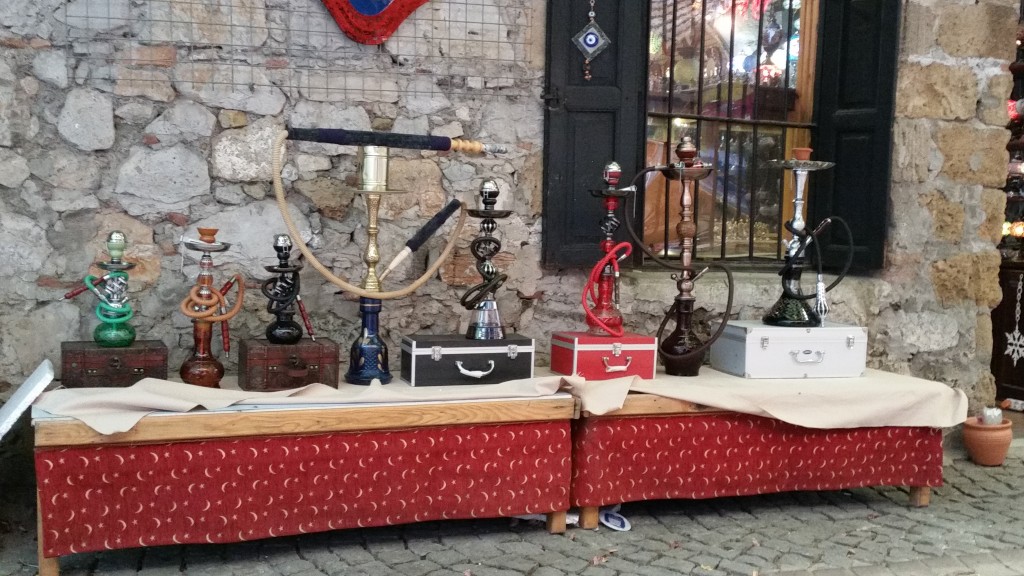
And looking up I noticed these were covering the sidewalk cafes from a different source of water.
